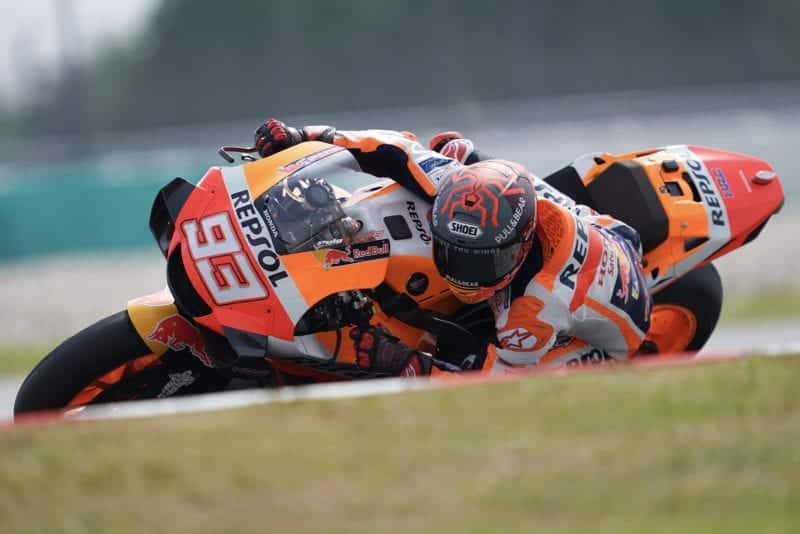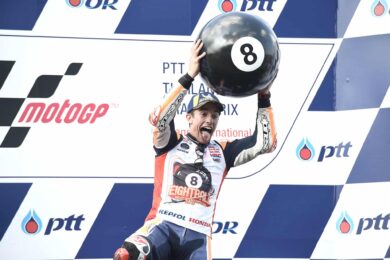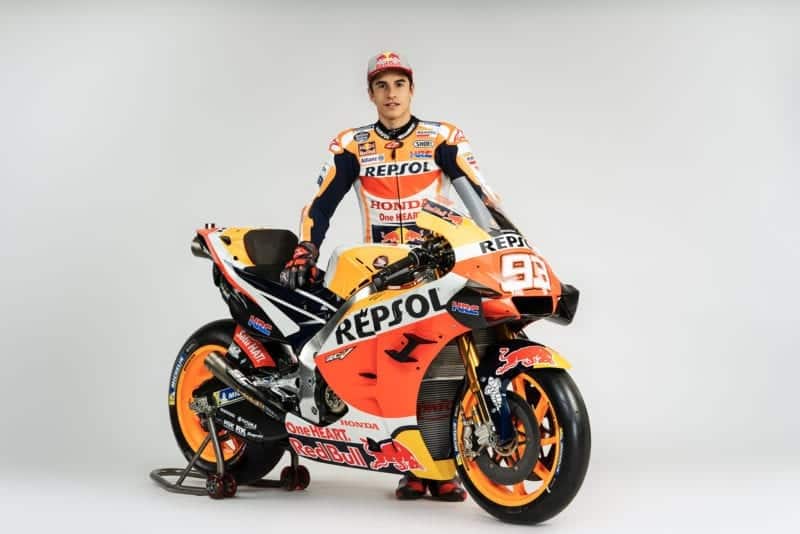It’s the same story with the current spec tyres. They have a narrow sweet spot – dependent on the asphalt, track temperature and track conditions – so when the tyres are outside that sweet spot the rider must find his own grip.
As one anonymous engineer told me recently. “The tyres change every week, so it’s a gamble: sometimes you hit the jackpot, others you lose the shirt off your back.” What Márquez does on Sunday afternoons is give his engineers their shirts back, often with his elbows.
Márquez has highlighted his chameleon ability on many occasions. The first time it really hit me was at Le Mans in 2013, during his rookie MotoGP season, before Michelin and Magneti Marelli arrived.
That Sunday, the 20-year-old rookie contested his first wet-weather MotoGP race. At that time, he had only ridden a MotoGP bike in the rain for a few laps during pre-season testing. Track temperature at Le Mans was half what it had been at Sepang and the track could hardly be more different, but after just eight laps Márquez was the fastest rider out there, quicker than all the MotoGP stars that had been riding MotoGP bikes and Bridgestone tyres for years. My jaw dropped.
This is riding by the seat of your pants – feeling what your bike and tyres need and instantly adapting to those needs. Wing it to win it!
Márquez isn’t the only rider in history to have enjoyed this ability, but his talent is stronger than anything we’ve seen before.



